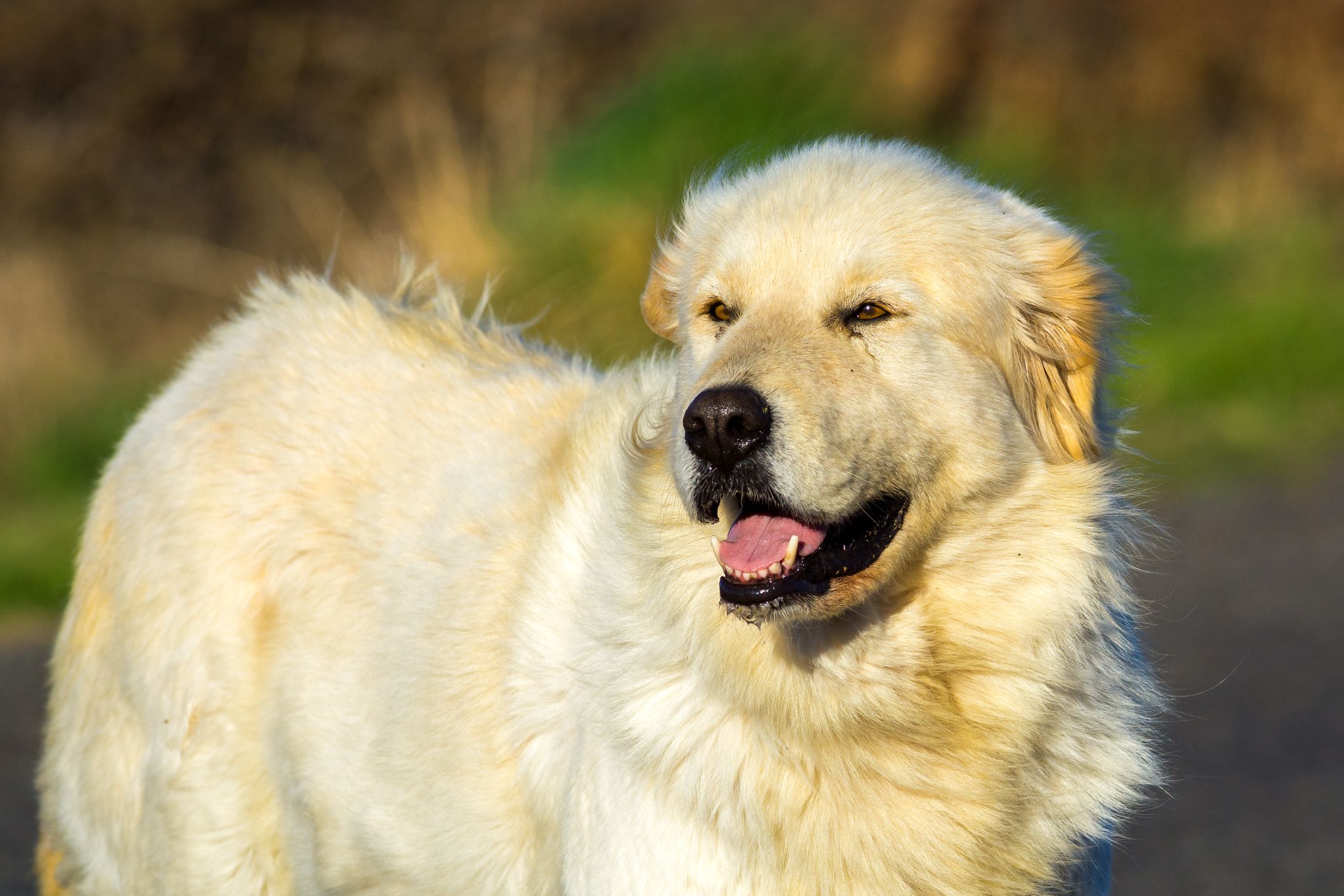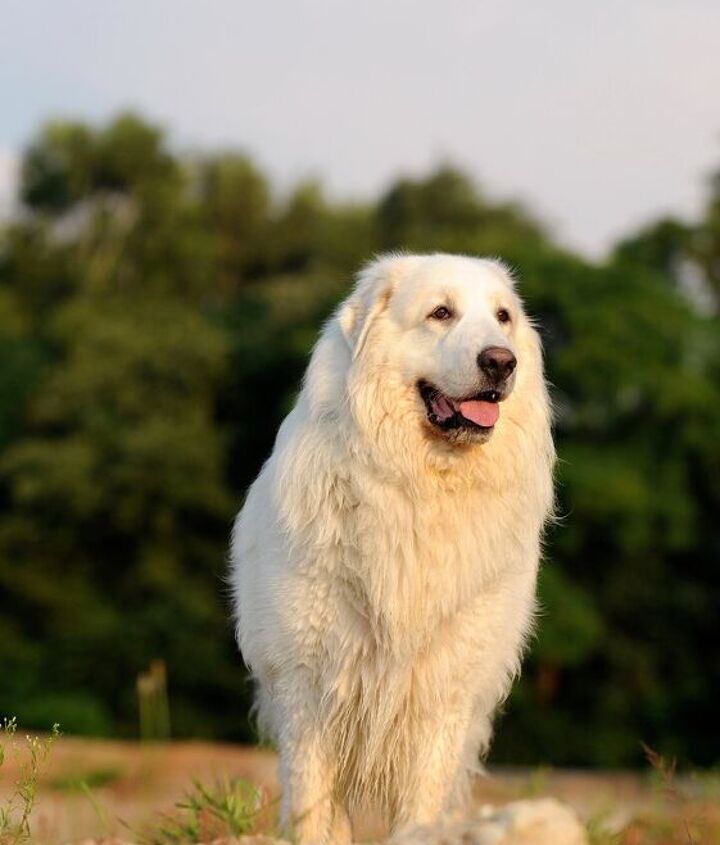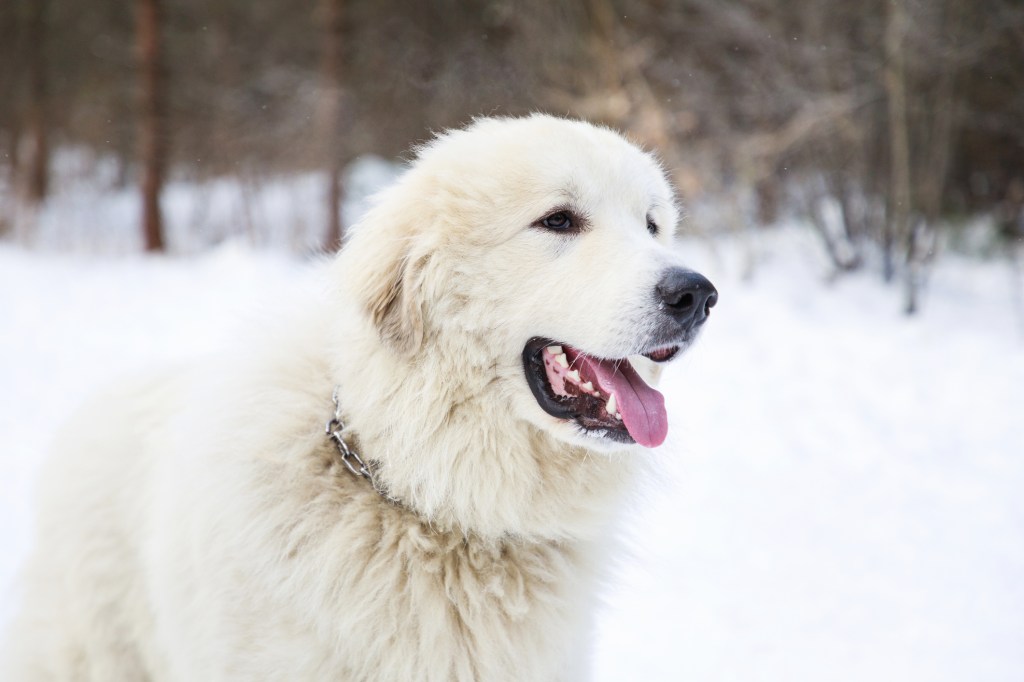The Great Pyrenees is a truly magnificent breed, known for its gentle yet powerful demeanor. These majestic dogs have a long history of protecting livestock and families in the rugged terrain of the Pyrenees Mountains. With their thick, double coat of white fur, they are well-equipped to withstand the harsh winters of their native homeland.
In this comprehensive guide, we will explore the history, temperament, and care of the Great Pyrenees. We will also discuss their unique talents as working dogs and their suitability as family pets. Whether you are considering adding a Great Pyrenees to your family or simply want to learn more about this amazing breed, we encourage you to read on.
History of the Great Pyrenees

The Great Pyrenees is an ancient breed, dating back to the 3rd century BC. It is believed that the breed descended from Tibetan mastiffs that were brought to the Pyrenees Mountains by nomadic herders. The Great Pyrenees quickly became an essential part of mountain life, protecting flocks of sheep and goats from wolves, bears, and other predators.
Over the centuries, the Great Pyrenees has become synonymous with the Pyrenees Mountains. They were highly valued by shepherds for their ability to guard and protect their herds. In fact, the breed was so important that it was often given as a gift to royalty and nobility. King Louis XIV of France was said to be a great admirer of the breed and kept several Great Pyrenees at his palace.
Origins of the Name
The Great Pyrenees is also known by several other names, including Pyrenean Mountain Dog, Chien de Montagne des Pyrénées, and Patou. The name “Great Pyrenees” comes from the region where the breed originated – the Pyrenees Mountains. The word “Pyrenees” is derived from the Greek word “pyr,” meaning fire, and “eneos,” meaning snow. This name is fitting for the breed, as they are known for their ability to withstand extreme temperatures.
Appearance and Characteristics

The Great Pyrenees is a large breed, standing at 25-32 inches tall and weighing between 85-115 pounds. They have a muscular build, with a deep chest and broad shoulders. Their head is proportionate to their body, with a slightly rounded skull and a strong muzzle. The most distinctive feature of the Great Pyrenees is their thick, white coat. This double coat serves as insulation against the cold and also helps to protect them from predators.
Coat and Grooming
The Great Pyrenees has a long, coarse outer coat and a soft, dense undercoat. Their coat is weather-resistant and sheds dirt easily, making them relatively low maintenance in terms of grooming. However, their coat does require regular brushing to prevent matting and to remove loose fur. During shedding season, which occurs twice a year, they will need more frequent brushing to keep their coat healthy and free of tangles.
It is important to note that the Great Pyrenees is a heavy shedder, so they may not be the best choice for those with allergies. They also have a tendency to drool, especially after eating or drinking, so it’s important to keep a towel handy to wipe their mouth.
Color Variations
While the Great Pyrenees is most commonly seen in white, they can also come in shades of gray, tan, or reddish-brown. However, these colors are considered faults according to the breed standard and may disqualify them from conformation shows. Regardless of color, all Great Pyrenees should have a solid white or predominantly white coat.
Temperament and Personality

The Great Pyrenees is known for its calm and gentle demeanor, making them excellent family dogs. They are loyal and devoted to their owners, but can also be independent and strong-willed. As a working breed, they have a natural instinct to protect and guard, which can make them wary of strangers. Early socialization is important to ensure that they are well-adjusted and friendly with people and other animals.
Family Life
Great Pyrenees are not recommended for apartment living due to their large size and need for space to roam. They do best in a home with a yard or access to open spaces where they can exercise and explore. They are also not suited for hot climates, as their thick coat can cause them to overheat easily.
While they make great family pets, it’s important to note that the Great Pyrenees may not be suitable for families with young children. Their large size and protective nature can make them unintentionally rough with small children. However, with proper training and socialization, they can be gentle and patient with kids.
Working Dogs
As mentioned earlier, the Great Pyrenees has a long history as a working dog. They were bred to guard and protect livestock, and this instinct is still very much present in the breed today. They are highly intelligent and excel in tasks such as herding, tracking, and search and rescue. Many Great Pyrenees are also trained as therapy dogs, providing comfort and companionship to those in need.
Training and Exercise Needs

The Great Pyrenees is an intelligent breed, but they can also be stubborn and independent. This can make training a bit challenging, so it’s important to start early and be consistent. Positive reinforcement techniques work best with this breed, as they respond well to praise and rewards. Harsh or forceful training methods can cause them to become fearful and uncooperative.
In terms of exercise, the Great Pyrenees is a relatively low-energy breed. They are content with a daily walk or play session in the yard. However, they do require mental stimulation to prevent boredom and destructive behaviors. Puzzle toys and training activities can help keep their minds engaged.
Health Concerns
Like all breeds, the Great Pyrenees is prone to certain health issues. It’s important for potential owners to be aware of these conditions and to work with a reputable breeder who screens for them. Some common health concerns in the Great Pyrenees include:
- Hip and Elbow Dysplasia: This is a genetic condition that affects the joints and can cause pain and mobility issues.
- Bloat: Also known as gastric dilatation-volvulus (GDV), this is a life-threatening condition where the stomach becomes twisted and cuts off blood supply to vital organs.
- Eye Problems: Great Pyrenees can be prone to eye issues such as cataracts, entropion, and progressive retinal atrophy (PRA).
- Osteosarcoma: This is a type of bone cancer that is more prevalent in large breeds like the Great Pyrenees.
It’s important to note that not all Great Pyrenees will develop these health issues, but it’s important to be aware of them and to monitor your dog’s health closely.
Nutrition and Feeding
The Great Pyrenees is a large breed, so they require a diet that is specifically formulated for their size and activity level. It’s important to choose a high-quality food that provides balanced nutrition and meets their specific needs. As a working breed, they may require more calories than a sedentary pet, so it’s important to consult with a veterinarian to determine the appropriate amount of food for your Great Pyrenees.
It’s also important to monitor their weight and adjust their food intake accordingly. Obesity can lead to a host of health issues, so it’s important to keep your Great Pyrenees at a healthy weight.
Bringing a Great Pyrenees into Your Family
If you’re considering adding a Great Pyrenees to your family, there are a few things to keep in mind. First and foremost, it’s important to do your research and find a reputable breeder. A responsible breeder will be knowledgeable about the breed and will screen their dogs for genetic health issues. They will also provide proper socialization and early training for their puppies.
It’s also important to consider if the Great Pyrenees is the right fit for your lifestyle. As mentioned earlier, they are not suited for apartment living or hot climates. They also require regular grooming and may not be suitable for those with allergies.
Video
Conclusion
In conclusion, the Great Pyrenees is a truly majestic breed with a rich history and unique characteristics. From their role as protectors of the high peaks to their gentle and loyal nature, they are truly one-of-a-kind. While they may not be the best fit for every family, those who have the privilege of owning a Great Pyrenees know that they are truly special and irreplaceable companions. If you are considering adding a Great Pyrenees to your family, we hope this comprehensive guide has provided valuable information to help you make an informed decision.